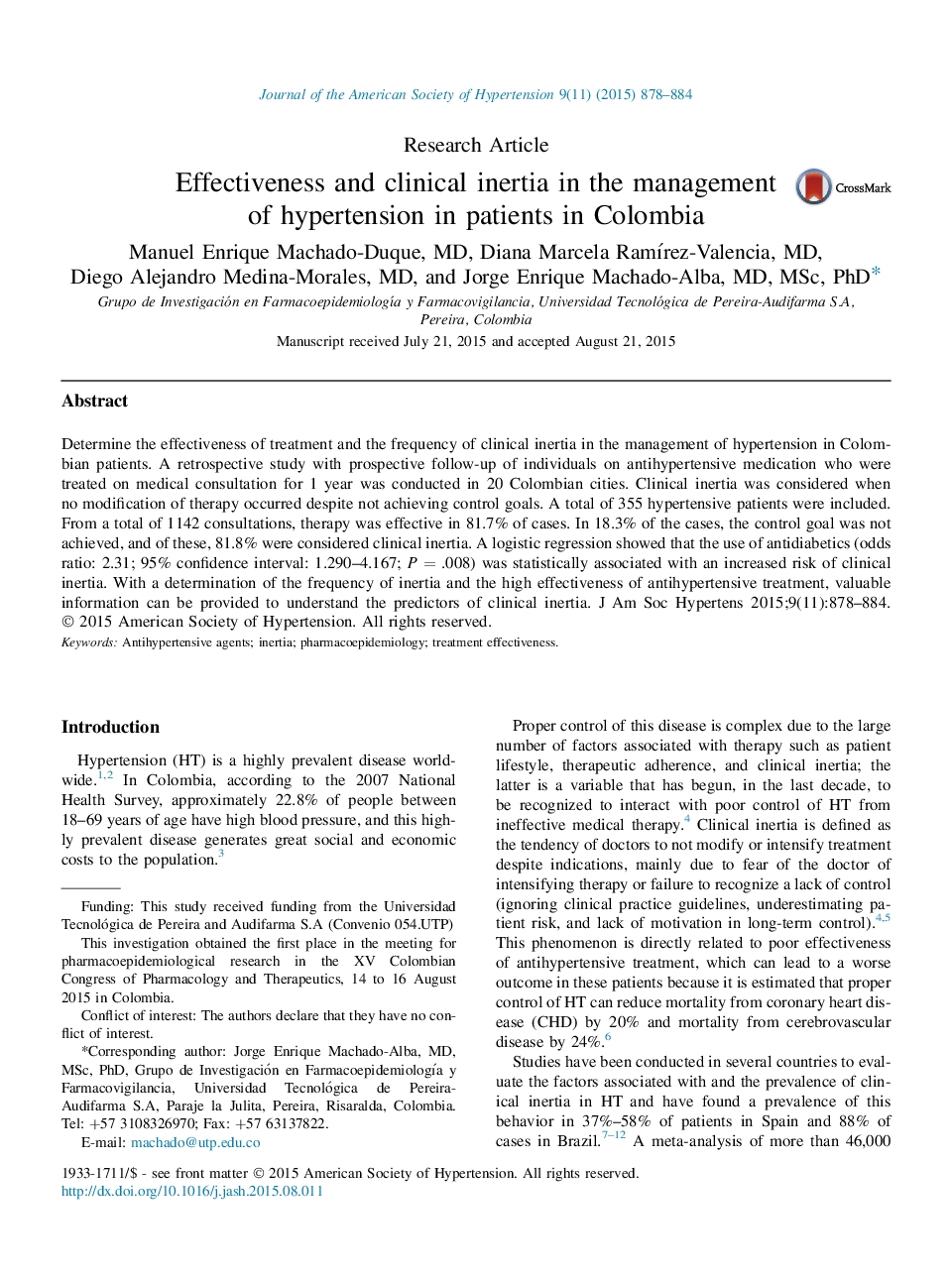| Article ID | Journal | Published Year | Pages | File Type |
|---|---|---|---|---|
| 5983565 | Journal of the American Society of Hypertension | 2015 | 7 Pages |
â¢Clinical inertia influences the lack of control of hypertension in primary care.â¢In Latin America, there are no studies that have reported hypertension clinical inertia.â¢An effectiveness of 81.7% and inertia in 81.8% of patients uncontrolled were found.â¢Diabetes, chronic kidney disease, and >65 years old are predictors of clinical inertia.
Determine the effectiveness of treatment and the frequency of clinical inertia in the management of hypertension in Colombian patients. A retrospective study with prospective follow-up of individuals on antihypertensive medication who were treated on medical consultation for 1Â year was conducted in 20 Colombian cities. Clinical inertia was considered when no modification of therapy occurred despite not achieving control goals. A total of 355 hypertensive patients were included. From a total of 1142 consultations, therapy was effective in 81.7% of cases. In 18.3% of the cases, the control goal was not achieved, and of these, 81.8% were considered clinical inertia. A logistic regression showed that the use of antidiabetics (odds ratio: 2.31; 95% confidence interval: 1.290-4.167; PÂ =Â .008) was statistically associated with an increased risk of clinical inertia. With a determination of the frequency of inertia and the high effectiveness of antihypertensive treatment, valuable information can be provided to understand the predictors of clinical inertia.
Graphical AbstractDownload high-res image (127KB)Download full-size image
